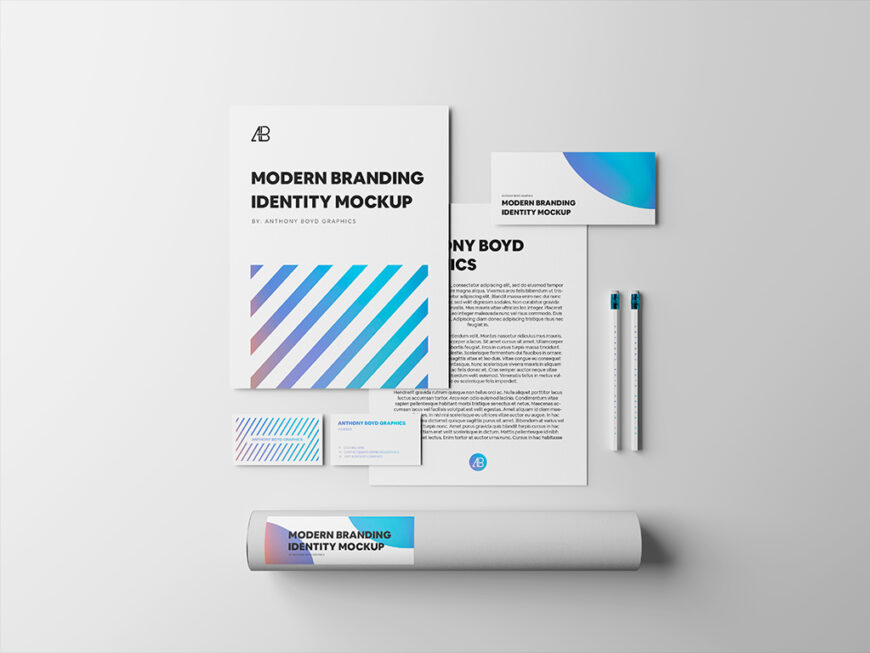
Spiral: A Comprehensive Guide to Brand Identity Mockup
Introduction
In today’s competitive business landscape, a well-defined brand identity is crucial for establishing a strong and recognizable presence in the market. A brand identity encompasses all the visual and verbal elements that represent a company, including its logo, typography, color palette, and messaging. To effectively showcase and communicate a brand’s identity, a brand identity mockup is an indispensable tool.
What is a Brand Identity Mockup?
A brand identity mockup is a visual representation of a brand’s identity applied to various physical and digital materials. It provides a comprehensive overview of how the brand’s elements will be utilized in real-world scenarios. Mockups can include a range of items, such as business cards, letterheads, brochures, packaging, website layouts, and social media graphics.
Benefits of Using a Brand Identity Mockup
Utilizing a brand identity mockup offers numerous advantages for businesses:
-
Clarity and Consistency: Mockups ensure that all aspects of the brand identity are cohesive and consistent across different touchpoints. They provide a visual guide for designers and marketers to adhere to, maintaining the integrity of the brand’s identity.
-
Improved Communication: Mockups facilitate effective communication of the brand’s identity to stakeholders, clients, and employees. They present a visually appealing and tangible representation of the brand, making it easier to understand and implement.
-
Testing and Iteration: Mockups allow for thorough testing and iteration of the brand identity before it is finalized. Businesses can gather feedback, make adjustments, and validate the effectiveness of the design before investing in production.
-
Enhanced Brand Perception: A well-executed brand identity mockup enhances the perception of the brand as professional, cohesive, and trustworthy. It conveys attention to detail and a commitment to building a strong and recognizable identity.
Elements of a Brand Identity Mockup
A comprehensive brand identity mockup typically includes the following elements:
-
Logo: The mockup showcases the brand’s logo in various sizes and orientations, demonstrating its versatility and impact.
-
Typography: The mockup presents the brand’s chosen typefaces and font styles, illustrating their use in headlines, body copy, and other text elements.
-
Color Palette: The mockup displays the brand’s color palette, including primary, secondary, and accent colors. It demonstrates how the colors are applied to different design elements.
-
Imagery: The mockup incorporates the brand’s signature imagery, including photographs, illustrations, or graphic elements. It shows how imagery is integrated into the brand’s visual communication.
-
Messaging: The mockup conveys the brand’s messaging, including its mission statement, brand values, and key differentiators.
Types of Brand Identity Mockups
Brand identity mockups come in various formats, each with its own purpose and benefits:
-
Print Mockups: Print mockups showcase the brand identity applied to physical materials, such as business cards, letterheads, brochures, and packaging. They provide a realistic representation of how the brand will appear in print.
-
Digital Mockups: Digital mockups present the brand identity in a digital context, including website layouts, social media graphics, and email templates. They demonstrate how the brand’s elements will translate to online platforms.
-
3D Mockups: 3D mockups create a three-dimensional representation of the brand identity, offering a more dynamic and immersive experience. They can be used to showcase product packaging, branding for physical spaces, or interactive elements.
Creating a Brand Identity Mockup
To create an effective brand identity mockup, follow these steps:
-
Define the Brand Identity: Establish a clear understanding of the brand’s values, target audience, and desired perception.
-
Gather Inspiration: Conduct research and gather inspiration from brands with successful identities. Identify elements that align with the brand’s goals and resonate with the target audience.
-
Develop Design Concepts: Explore different design variations that incorporate the brand’s elements. Consider multiple logo designs, typography options, and color schemes.
-
Create Mockups: Use design software to create mockups that represent the chosen design concepts. Experiment with different layouts, imagery, and messaging to find the most effective combinations.
-
Get Feedback: Share the mockups with stakeholders, clients, and colleagues for feedback. Gather insights, make revisions, and refine the design until it meets the desired requirements.
FAQ
1. Why is a brand identity mockup important?
A brand identity mockup provides a visual representation of how a company’s brand identity will be applied across





